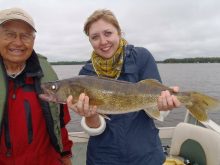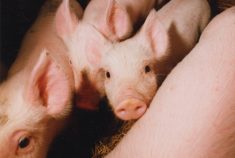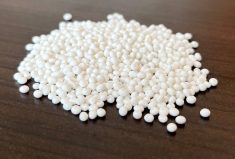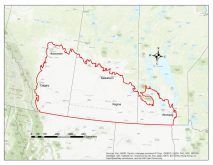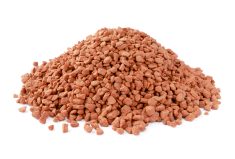The Manitoba government last week announced two new plans for water management in the province, and while they won’t take effect until a public consultation process occurs, they will be positive for farmers.
In the first document, Towards Sustainable Drainage new drainage regulations are outlined that mean producers will no longer need to complete a lengthy approval, inspection and licensing process for minor drainage projects. They will simply register the drainage work with the province, and then proceed with work in a timely manner.
KAP was a part of the stakeholder group that consulted with the province on these regulations, and I believe we have done our job well. Since these minor projects account for the vast majority of the drainage undertaken, this will be a huge step forward in getting land into production that may otherwise risk flooding every year.
Read Also

Mazergroup’s Bob Mazer dies
Mazergroup’s Bob Mazer, who helped grow his family’s company into a string of farm equipment dealerships and the main dealer for New Holland machinery in Saskatchewan and Manitoba, died July 6 from cancer.
The second component of the proposed regulations addresses drainage of permanent and semi-permanent wetlands, which only makes up a small portion of the drainage work done by farmers.
Currently, it is challenging to get a licence to drain a permanent or semi-permanent wetland, but in the proposed new system a formal process would be established that will strictly define the criteria that a landowner must meet in order to undertake this type of drainage project. This includes ensuring any downstream effects associated with removing a permanent wetland, including flooding neighbours’ land, is mitigated through the reconstruction or retention of wetlands in other areas of the watershed.
As an example, if there is a permanent or semi-permanent wetland in an area of a field that impedes planting and production, the farmer would be able to drain that area and designate another area in the same field — or at another location within the watershed — as a wetland.
I expect that a system will also be developed which will allow farmers to purchase wetland credits from other farmers and landowners to offset drainage on their private lands, rather than undertaking retention and reconstruction projects on their own.
- More from the Manitoba Co-operator: Worthwhile trade-off
The province has also proposed an increase in the enforcement of regulations to address illegal drainage projects, and while there have been issues in the past when legal projects have come under unnecessary scrutiny, I anticipate these simplified regulations will provide clarity for both landowners and water resource officers.
KAP is committed to continuing to work with the Department of Conservation and Water Stewardship to ensure that enforcement of these regulations is done fairly and consistently throughout Manitoba.
While we accept these proposed wetland regulations, KAP has always maintained that in any situation where land is taken out of production in the interest of watershed health that will benefit all of society, farmers must be compensated — and we will continue efforts to make this happen.
Another component of the proposed regulations addresses the use of tile drainage. Similar to surface drainage, tile drainage projects that meet basic criteria and do not involve draining permanent or semi-permanent wetlands would be allowed through a simple registration process.
I have heard of some municipalities being concerned about tile drainage projects having negative impacts due to incorrect installation, which is why the issue will be the focus of a government-stakeholder working group.
Following farmers in North Dakota and Minnesota, Manitoba farmers have embraced this new technology, and it is encouraging to see the Manitoba government and municipalities attempting to further understand the opportunities and constraints of this type of drainage. This is an important tool, and it should be accessible to all farmers.
The second plan announced by the province is the Surface Water Management Strategy that takes an all-encompassing view of water drainage across Manitoba, including that from agricultural, municipal, industrial and all other sources. KAP has been pressing for a comprehensive water management strategy, and we are pleased that it appears it is finally coming to fruition.
Instead of working with individual drainage issues, the strategy proposes to address entire watersheds and their interconnectivity.
It includes 50 specific actions that would be completed between now and 2020, and if done correctly will drastically reduce the effects of flooding and drought. They would also mitigate the effects of terminal basins, such as Whitewater Lake and Shoal Lakes, on surrounding landowners.
To help achieve the actions set out in the strategy, the province will be implementing light detection and radar (LiDAR) digital imagery that produces very accurate data for land elevation. KAP has lobbied for the use of this technology on a large scale because it is an excellent resource in land and water management planning.
From what I have heard, some farmers are concerned about these new developments in provincial water management, but I am convinced they are positive news. In the short term, we will see expedited minor drainage projects, and in the long term we will see solutions to perennial flooding and drainage issues.
Conservation and Water Stewardship Minister Mackintosh made it clear during his announcement of the new strategies that farmers need to be able to be productive on their land, and the goal is to have “sustainable drainage” as a tool for all farmers.
The work being done in Manitoba, however, cannot stop at the borders. Our neighbours to the south and to the west are also home to the watersheds that eventually flow into this province, and now they must do their parts to adopt similar measures. Manitoba can no longer be a recipient for unwanted water originating beyond its borders, and a multi-jurisdictional effort can recognize and solve this long-standing problem.
This is something that we will continue to press for, but for now, I think that producers in Manitoba should recognize that drainage regulations will be simplified and that a six-year strategy will be put in place to alleviate many of the drainage issues we experience.







